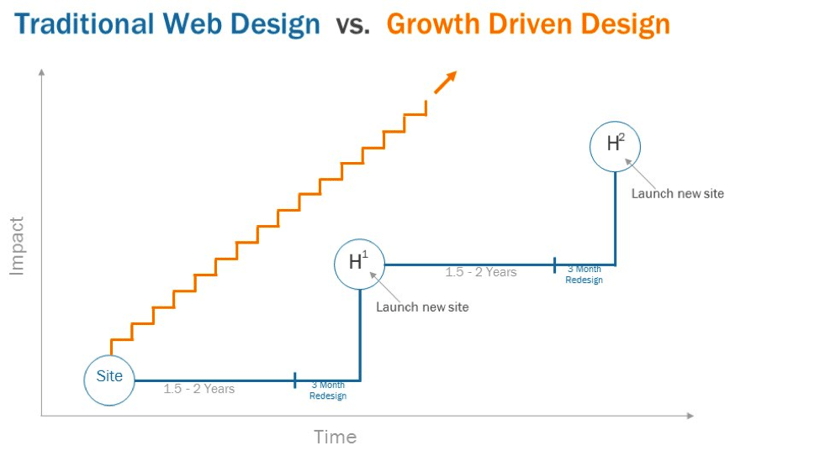5 min read
A Full Guide On Construction Website Design
![]() Ainhoa Rodriguez-Muguruza
:
11-Apr-2022 11:00:00
Ainhoa Rodriguez-Muguruza
:
11-Apr-2022 11:00:00

Inbound marketing has proven to be a remarkably efficient tool for creating benefits and helping generate more traffic and leads. As the construction industry becomes more tech-savvy, many companies are deciding to adopt this innovative marketing stance and follow the principles of an inbound marketing strategy. But are they ready?
When speaking inbound, your best salesperson is, without a doubt, your website.
If you are trying to become more inbound-friendly, but your website is not optimised, specifiers are likely to feel a lack of connection when visiting your site. A website designed following inbound principles and the specifier's journey is focused on providing the correct information, to the right people, at the right time.
Inbound is Research-Based
Gone are the days when creating a new website was simply designing something that looked great. However, a website designed without your ideal user in mind won't serve your customers' needs and will negatively impact the user experience.
Did you know that 88% of users are less likely to return to a website after a bad web experience? Your research should factor in some phases to guarantee that your website reflects your customers’ needs.
#1 Get to Know Your Clients
Get to know past customers and advocates of your brand honestly. A particularly effective way of doing this is by interviewing them.
Specifiers are often happy to offer insights into what they look for when searching for product solutions like your own. You can ask them about their position or work sector, about what attracted them to you, or even the keywords they used when browsing!
.png?width=2880&name=The%20Specifiers%20Journey%20(3).png)
#2 Design Your Buyer Persona
But rest assured, you will not have to interview every client you earn or specify that engages with your website. Instead, with the information gathered through a strategic number of interviews, you likely start seeing behavioural patterns. Then, you can identify those patterns and design a buyer persona. Personas take the guesswork out of the process of designing your website.
#3 Watch Out for Your Competitors
Take a peek at your competitors and the way they structure their websites. Far from looking out for things to mimic, think about what you could do differently and what you could do better. Put yourself in the shoes of a user on their website and start your website journey, identifying the elements that you think are a hit or, in contrast, a miss.
Inbound Relies on Identity
Architects tend to have a conservative stand in their specifications. They play safe! But they are also incredibly loyal if you provide them with flawless service. We've known architects to not even conduct research for projects due to their loyalty to a particular brand.
Positioning your brand as a trusted advisor can secure a long-term relationship with specifiers.
How well does your website reflect your identity?
#1 Make an Impactful First Impression
Specifiers are attracted to visual design that aids their journey. But that does not mean that a generic minimalist picture can captivate them.
Specifiers come across hundreds of technical documents and pictures every day. So, you will need to get yourself noticed and remembered. Invest in custom photography and videography for your website, showing the details of your product, the product in action, and case studies.
We cannot state this any clearer. Stock footage instils distrust in specifiers. They feel "dupped" when you display imagery that isn't yours, and this isn't how you want specifiers to view your brand.
#2 Educate about your Product instead of Selling it
You are an expert within your field. Communicate this. However, do this in a friendly way, and avoid industry-specific jargon and complex product names. Specifiers do not care that your pedestal system is called 'LP-10978', nor do they want to be bombarded with jargon they do not understand.
Be clear. Be concise. Allow the specifiers to choose when to access technical product information. Help the specifier, don't alienate them.
#3 Share Your Success Stories
Specifiers appreciate technical data, but, above everything, they are looking for results. Therefore, ensure they can find case studies that demonstrate the installation and utilisation of your products from start to finish.
Don't miss a detail here. Specifiers want to know every element of the project and your product, even its shortcomings. This will allow the specifier to build trust with your brand.
A Better Way To Design Websites
Traditional website design conceived websites as a project that is built and rarely revisited within the first 5-10 years after the site is up and running. However, today's digital world asks building product businesses to be much more dynamic.
Approaches like the growth-driven design methodology promote your website's consistent optimisation and tailoring to ensure it always performs at its best at a more realistic price point.
Is your website giving you enough room to grow? If the answer is negative, your website is not serving you the way it should.

Traditional web design is a huge risk due to its massive time investment, and large upfront cost for a site that may go out of scope by the go-live date. Traditional sites are built on assumptions, often take 3 - 6 months to build and are updated every 2 - 5 years. This means real-time insights aren't taken into consideration when designing the site, resulting in a site destined to produce lacklustre results.
A Growth-Driven Design (GDD) website can be launched quickly as it will be developed constantly. This means costs can be spread over time, allowing you to make data-driven, business-aligned decisions. GDD is based on real-world insights and is continually developed month by month to revolve around your audience to drive results.
#1 Adopt a Growth-Driven Design Methodology
Your website should not feel constrictive. In contrast, it should accompany you in your growth! It should be your springboard to more ambitious projects. The growth-driven web design approach is an intelligent and progressive design methodology that continuously optimises and produces data-based analytics, allowing you to improve your site to better cater to your user experience.
#2 Understand and Apply your Data
Your website should be the starting point in your growth journey, but it should also become your primary and most reliable source of user behaviour data. In order to guarantee your site is performing as it should, it is recommended to use analytics tools like HubSpot Reporting or Google Analytics that would measure metrics such as bounce rates, amount of people visiting your site, conversions etc.
#3 Invest in the Right Tech-Stack
Our websites are built in the HubSpot CMS, a dynamic and powerful platform. By breaking down and demystifying the process of designing websites, we put you in control. Understanding exactly how we collaborate will enable you to better understand and have confidence in the process.
#4 Inbound Gets You Seen
Sadly, SEO is often forgotten when designing your website. The truth is, SEO is not something to be overlooked. I cannot imagine anything more frustrating than spending anything from £7K to £20K on your new website for it to be virtually invisible! Web design is not about looking good anymore, but about being found and appearing first on Google’s SERPs.
Did you know that 75% of people browsing on Google would not click on a page that is not ranking in the top three?
#1 Audit your Website
You can prevent some of the most common SEO mistakes by auditing your website periodically. Conducting an audit does not need to be complex or expensive and, in fact, can be effectively done through free tools available online, like our very own Website Grader. This tool will give you information on your site's performance, SEO, mobile responsibility, and security.
#2 Make Your Technical SEO Bullet-Proof
Once you have audited your website, you must optimise your technical SEO. Use free tools such as SEMrush and Moz to understand the health of your website or, alternatively, reach out to professionals for them to conduct an SEO research piece for you.
#3 Optimise your On-Page SEO
Ensuring your website's on-page user experience is positive should not force you to sacrifice the elements that will make search engines find you. Your pages must speak in a language that mimics the keywords and phrases specifiers use when searching for solutions. These keywords will help you strategically rank higher and boost the traffic to your site.
#4 Start Blogging
If you have not yet considered starting blogging, we highly encourage you to do it. Blogs are a fantastic way to show your expertise on a particular topic and increase your chances of being featured by search engines. Your content should be optimised and aligned with the research we have laid out throughout this blog post, generating the connections Google looks for when ranking content!
About Insynth
At Insynth we deliver a predictable flow of leads, customers, and specifications for building product brands through our inbound marketing approach, proven to reach a technically demanding audience.
We use the latest marketing techniques such as construction inbound marketing, to equip building product companies to grow sustainability in this era of digital transformation.
As the only HubSpot certified agency to major in construction marketing. We have a proven formula of bringing a variety of functionalities together including CRM Implementation, Web Design, Sales Automation, SEO, and Email Marketing to achieve your ultimate aim: Growing your business and gaining new specifiers and customers.
Book A Free Consultation Today

